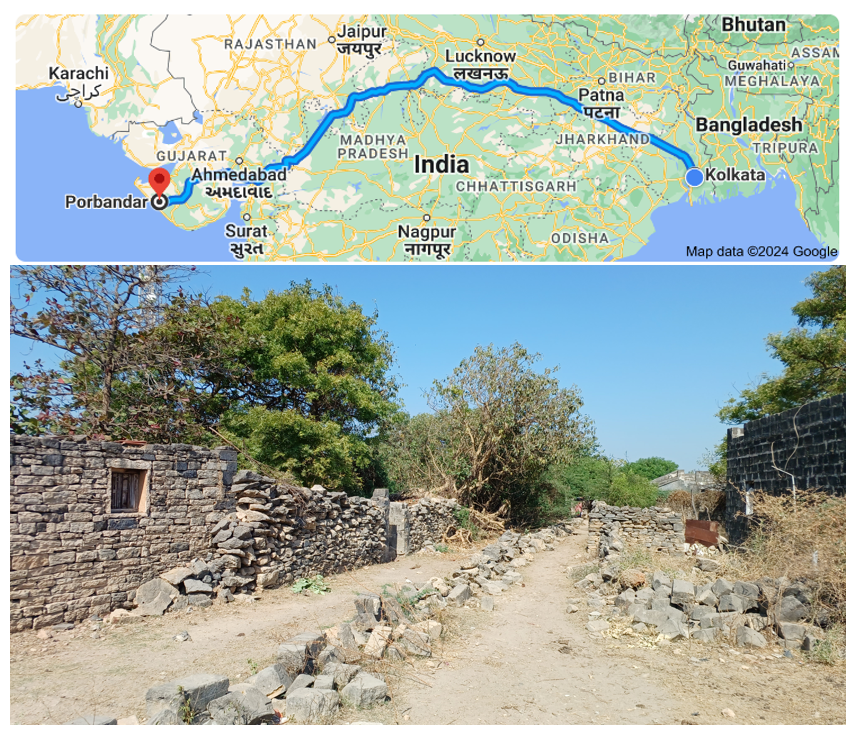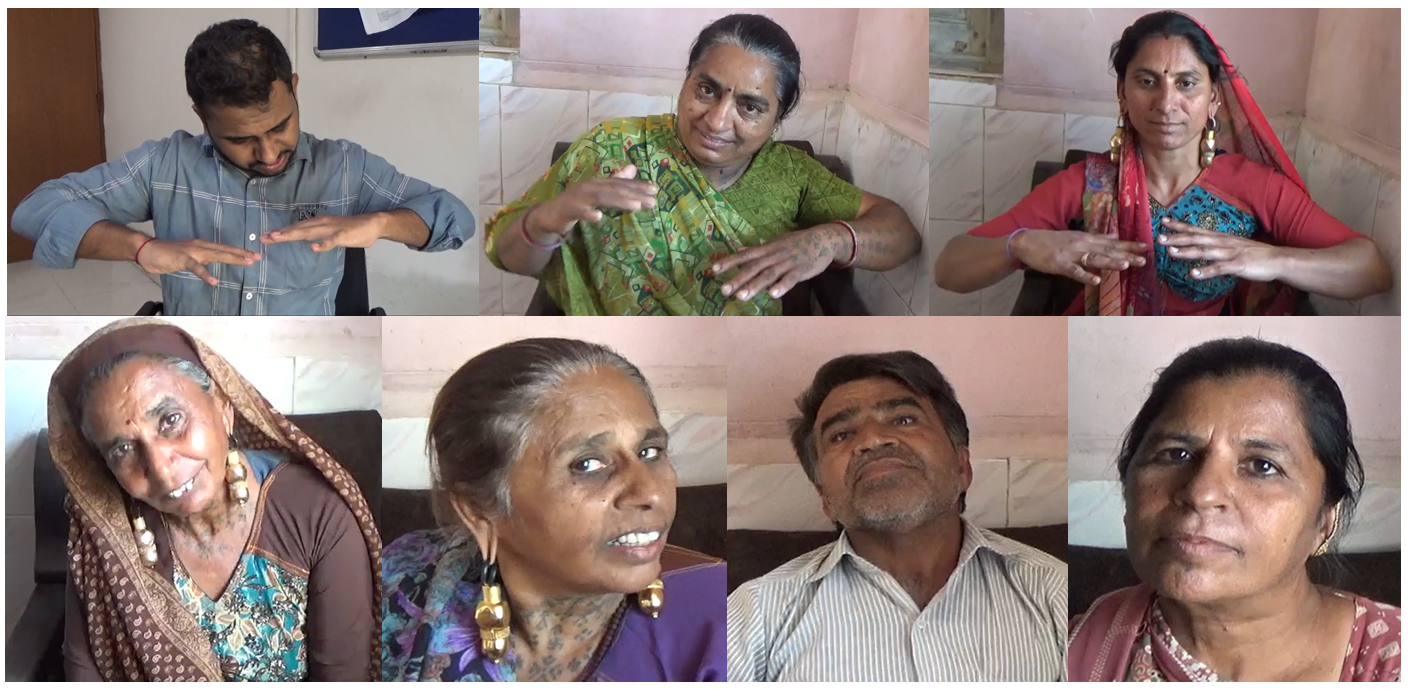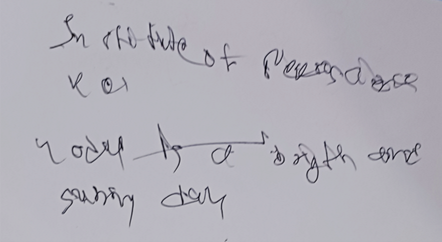Objective: Delineation of phenotypic diversity of DYT-ANO3 in a large tribal family of Indian origin.
Background: DYT-ANO3 (DYT24) is a rare cause of autosomal dominant isolated or combined dystonia, age of onset varying from childhood to middle age. It commonly presents with cranio-cervical involvement with or without dystonic tremor. Other reported phenotypes include myoclonus-dystonia, non-dystonic tremor, lower limb dystonia, parkinsonism and chorea [1-3].
Method: We assessed the index patient in the movement disorder clinic at Institute of Neurosciences Kolkata (I-NK). Clinical assessment and blood sample collection of the other affected members [Figure 1] were done by visiting a remote coastal village near Porbandar district, Gujarat, in the westernmost part of India [Figure 2].
Results: Out of these 14 patients with DYT-ANO3 (7 males and 7 females), the mean age of onset was 26.92 ± 11.71 years. Segmental dystonia involving the neck and upper limbs along with dystonic tremor was the commonest phenotype (n=6, 42.85%), followed by isolated cervical dystonia with dystonic tremor (n=5, 35.71%) [Figure 3]. Myoclonus-dystonia phenotype was observed in 3 of them (21.42%) [Figure 4]. Speech was involved in 4, because of laryngeal dystonia (n=2) and voice tremor (n=2). Other associated clinical findings were mild parkinsonism (n=3) and generalized chorea (n=1). Isolated dystonic tremor in the upper limbs was seen in 3 patients (21.42%), while non-dystonic foot tremor was noted in 1 patient. Conjunctival and scleral telangiectasia and vessel tortuosity were present in all of them [Figure 5].
Whole exome sequencing of the index patient revealed a novel heterozygous 3 base pair insertion in exon 17 of the ANO3gene (c.1796_1798dup) on chromosome 11 resulting in an in-frame insertion of amino acid Alanine at codon 599 (p.Ala599dup). Sanger sequencing of the other 13 affected members confirmed the segregation of this same variant in a heterozygous state.
Conclusion: We have documented the largest family of DYT-ANO3 reported so far with a novel variant. The overlapping phenotypic spectrum includes segmental dystonia, isolated cervical dystonia, dystonic tremor in upper limbs, myoclonus-dystonia, non-dystonic tremor, parkinsonism and chorea. Conjunctival and scleral telangiectasia and vessel tortuosity were unique findings in our case series.
Pedigree
Location of the village we went from Kolkata
Phenotypic variability
Handwriting of myoclonus-dystonia phenotype
Telangiectasia and vessel tortuosity
References: [1] Percetti M, Zini M, Soliveri P, Cogiamanian F, Ferrara M, Orunesu E, Ranghetti A, Ferrarese C, Pezzoli G, Garavaglia B, Isaias IU, Sacilotto G. The Clinical Spectrum of ANO3-Report of a New Family and Literature Review. Mov Disord Clin Pract. 2024 Jan 29. doi: 10.1002/mdc3.13979
[2] Carvalho V, Martins J, Correia F, Costa M, Massano J, Temudo T. Another Twist in the Tale: Intrafamilial Phenotypic Heterogeneity in ANO3-Related Dystonia. Mov Disord Clin Pract. 2021 Apr 23;8(5):758-762. doi: 10.1002/mdc3.13209
[3] Stamelou M, Charlesworth G, Cordivari C, Schneider SA, Kägi G, Sheerin UM, Rubio-Agusti I, Batla A, Houlden H, Wood NW, Bhatia KP. The phenotypic spectrum of DYT24 due to ANO3 mutations. Mov Disord. 2014 Jun;29(7):928-34. doi: 10.1002/mds.25802
To cite this abstract in AMA style:
J. Ganguly, N. Sarmah, A. Rawool, H. Kumar. Intrafamilial phenotypic variability of DYT-ANO3: Analyzing 14 affected members with a novel variant [abstract]. Mov Disord. 2024; 39 (suppl 1). https://www.mdsabstracts.org/abstract/intrafamilial-phenotypic-variability-of-dyt-ano3-analyzing-14-affected-members-with-a-novel-variant/. Accessed December 29, 2025.« Back to 2024 International Congress
MDS Abstracts - https://www.mdsabstracts.org/abstract/intrafamilial-phenotypic-variability-of-dyt-ano3-analyzing-14-affected-members-with-a-novel-variant/





